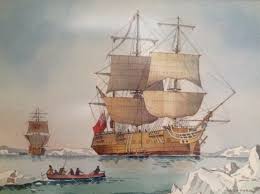Review: This Thing of Darkness by Harry Thompson
I don’t go in much for celebrities or hero worship though I’ll admit a few scientists and mathematicians have earned my grudging regard. However, Captain Robert Fitzroy of HMS Beagle has now joined my personal Pantheon.
This delightful book claims to be an honest, fictionalised telling of his life and its intersection with the life of Charles Darwin and a whole host of mesmerising people including the first (Tierra del) Fuegians to arrive in Britain and Argentina’s first dictator. Apart from skippering the Beagle, Fitzroy was Governor of New Zealand and the creator of the British Meteorological Service. I’m cynical enough to feel that the author loved his subject too much to display all the warts but trusting enough to feel the truth is nevertheless there in his work. Darwin is painted more critically and comes across as very smart but also very vain and somewhat cowardly.
Promoted to his own ‘boat’ at 23, Fitzroy eventually makes it to rear-admiral, but his career and life are a series of failures (at least in his eyes). A dutiful man, he is burdened with a humanism that brings him into regular opposition with the world. When his superiors don’t ‘do the right thing’, he does, at his own expense, and so eventually bankrupts himself. He chose Darwin as a companion and though bright enough to share Darwin’s insights, he could not reconcile them with his religious beliefs. He sea-trialed the Beaufort scale for his friend Admiral Beaufort. A scientist in his own right, he produced charts of Patagonia, Chile, Tierra del Fuego and the Falklands and studied weather patterns, believing that weather could be forecasted.
This is a stunning adventure novel, which happens to be true. It will take pride of place beside Childer’s Riddle of the Sands on my bookshelf.




















